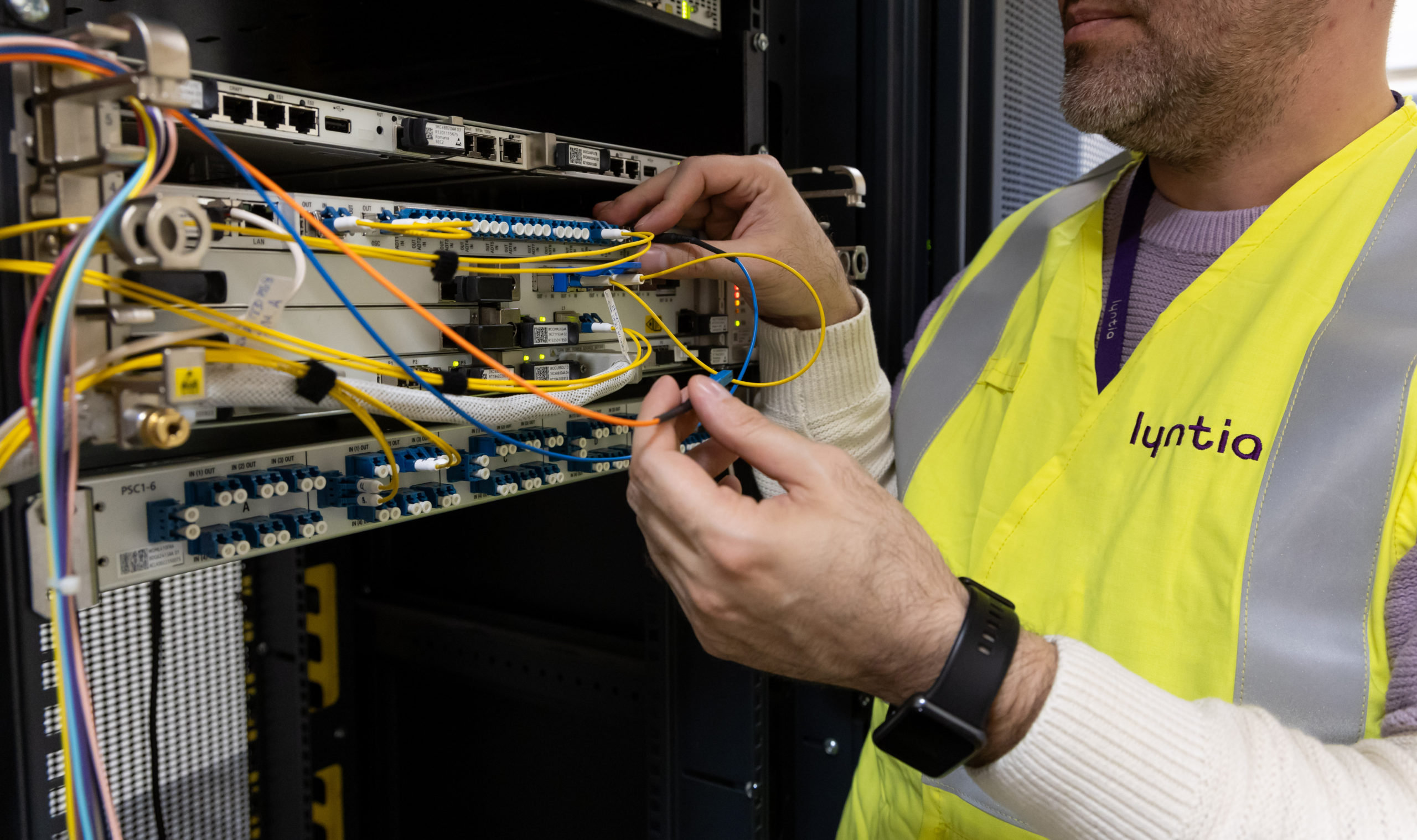
16 May Hollow Core: the technology revolutionising future optical networks
In the fast-paced world of telecommunications, the demand for higher speeds, lower latency, and greater capacity is constant. Businesses like yours need robust infrastructures that are prepared for the future. Today, we want to talk about an innovation that is set to transform optical networks: hollow core technology. Can you imagine transmitting data at the speed of light, literally? With hollow core, we are closer than ever. But what exactly is it, and why should it matter to you?
What is Hollow Core technology?
Traditional fibre optics has been the backbone of our communications for decades. It works by guiding light pulses through a solid glass or plastic core. It is a mature and efficient technology, but it has its physical limits.
To overcome these limitations without losing functionality—in fact, increasing it—hollow core fibre was developed. As the name suggests, the main difference lies in its internal structure; instead of a solid core, these fibres have a hollow centre, filled with air or a vacuum. Light travels through this central channel, guided by a micro-structure in the coating.
What advantages does it have over traditional fibre optics?
The key lies in how light is confined within the fibre. Through advanced photonic designs—such as anti-resonant band structures, for example—hollow core fibre creates a type of “light tunnel” that minimizes the interaction of the signal with the glass material. Light primarily travels through the air, and this has huge implications for speed and functionality.
Aware of what this could mean for many businesses and how to position themselves at the technological forefront, lyntia has recently established a synergy with other leading companies in the sector to spearhead a pioneering global pilot test aimed at testing quantum cryptography and the hollow core technology itself.
The potential impact of Hollow Core on the corporate world
Shifting from a solid medium to a hollow one is not just a technical curiosity. It unlocks tangible benefits that directly impact the performance of optical networks, which are a strategic resource for many businesses and organisations.
Blistering speeds: goodbye to latency
Light travels approximately 30-50% faster in air than in glass. This directly translates into a dramatic reduction in latency. For applications where every microsecond counts—such as trading, cloud computing, or the future 6G networks, for example—this advantage is crucial. Less delay means faster and more efficient operations.
Fewer losses, more efficiency
While attenuation or signal loss has been an initial development challenge for hollow core technology, recent advances are achieving levels comparable to or even better than traditional fibre in certain wavelength windows. Moreover, it has lower dispersion and fewer nonlinear effects, which simplifies transmission at high speeds over long distances.
Greater capacity and potential bandwidth
Thanks to its unique properties, hollow core fibre has the potential to support higher bandwidths and transmit more data simultaneously. This opens the door to new applications and services that are difficult to implement today over conventional optical networks.
Practical applications where Hollow Core truly excels
This technology is not science fiction. It is already being explored and deployed in specific sectors where its advantages are crucial:
– Data Centre Interconnection (DCI): Massive data movement with minimal latency.
– High-Frequency Trading (HFT): Where transaction speed is critical for competitiveness.
– 5G Networks: To meet the demanding latency requirements of fronthaul and backhaul.
– High-Performance Computing (HPC): Connecting supercomputers and research clusters.
– High-Precision Sensors: Exploiting the interaction of light with gases within the hollow core.
An innovation to enhance tomorrow’s optical networks
There is no doubt that hollow core represents a qualitative leap in the field of optical communications. Its ability to drastically reduce latency and potentially increase bandwidth positions it as a key technology for the future of networks.
We are looking at a technology that will not only optimise current applications but also enable tomorrow’s innovations, from ultra-fast 6G networks to advancements in quantum computing and distributed artificial intelligence.

